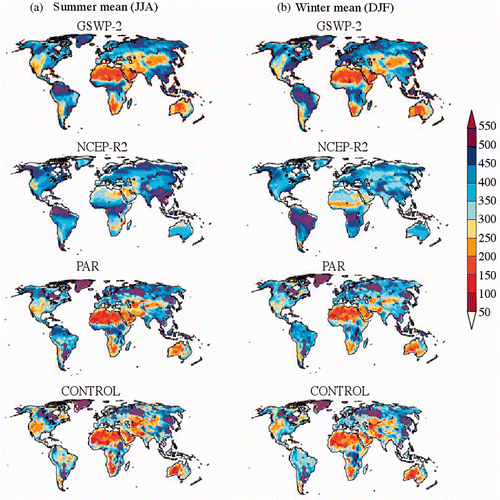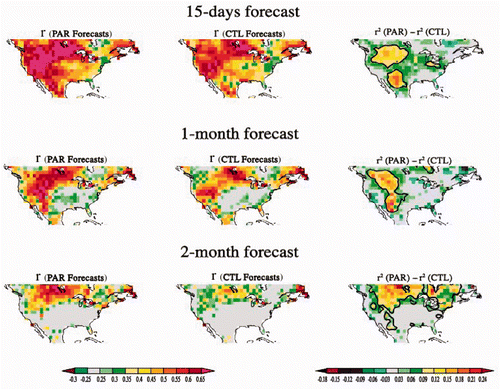Figures & data
Figure 1. Comparison of observed TRMM rain rate (left panel) and assimilated rain rate (right panel) for the month of November 2004. Shown are averaged daily precipitation in mm day−1.

Figure 2. The 6 h accumulation of precipitation for November 2004 (15 UTC) for TRMM (upper left), PAR (upper right) and NCEP R2 (lower panel). Units are in mm/6 h.
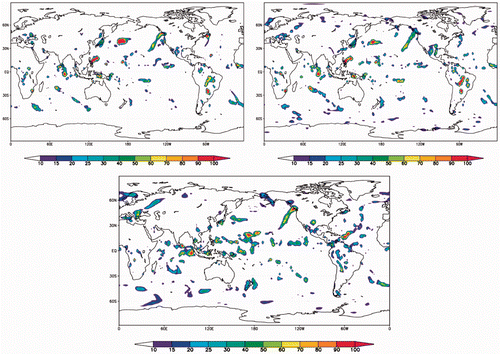
Figure 3. Area-averaged precipitation for the Eastern Pacific ITCZ (170 W to 120 W, 5 S to 5 N) for the month of November 2004. Solid black lines are TRMM observations, green dash–dotted lines are from NCEP R2 and red fine dotted lines are from PAR. Units are 6 h accumulations in mm.
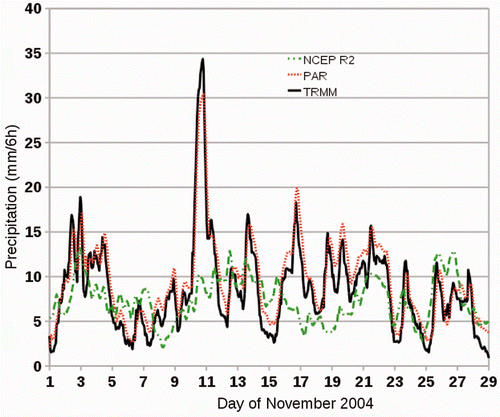
Figure 4. (a) Soil moisture (m3 m−3) and (b) precipitation (mm) for Oklahoma. Black lines are from observations (Oklahoma Mesonet and GPCC), fine dotted lines are from PAR and dash–dotted lines are from the control experiments.

Figure 5. Monthly soil moisture climatology profile from observations (top panel), PAR (middle panel) and Control experiment (lower panel). Soil moisture units are m3 m−3 and depth is in cm.
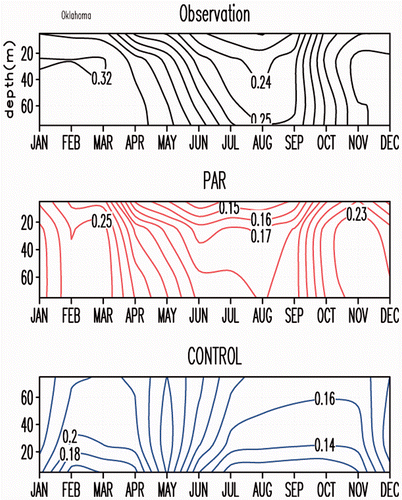
Figure 6. Soil moisture anomaly at four layer depths for Oklahoma. Observations are black lines, PAR fine dotted lines and Control dash–dotted lines. Units are in m3 m−3. Vertical grid spacing is 0.1 for the top layer and 0.05 for the bottom three layers. Bold horizontal lines are zero.
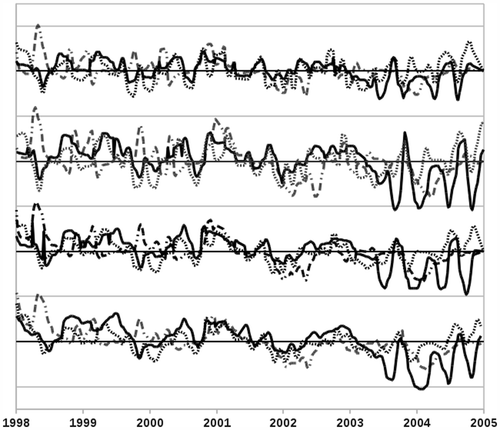
Figure 7. Net short-wave radiation flux anomaly (W m−2) for Oklahoma. Observation is the black line, PAR is the fine dotted line and Control is the dash–dotted line.

